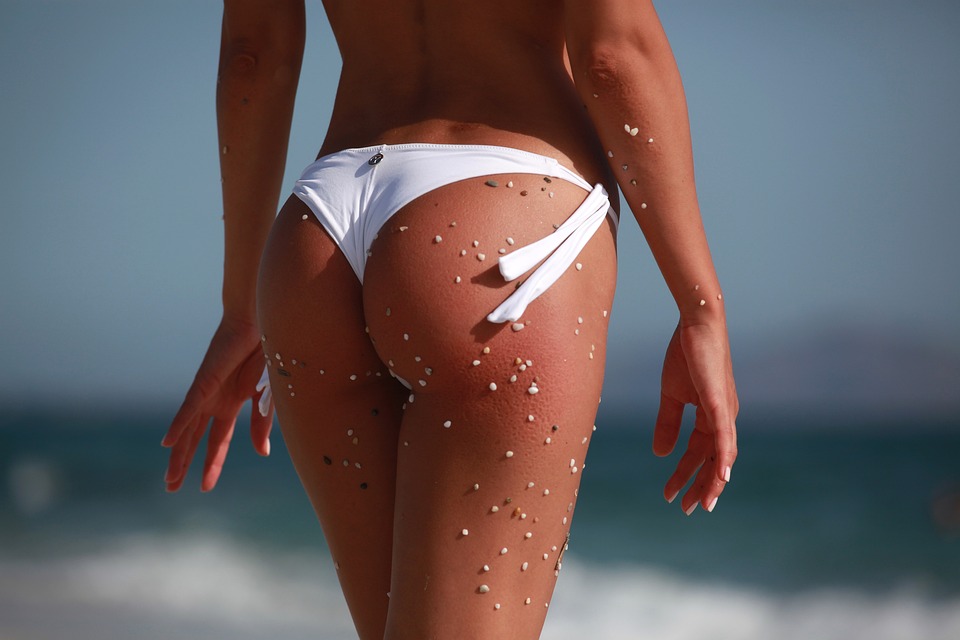The Perplexing Phenomenon of Bikini Line Skin Peeling: Causes, Treatments, and Prevention
Introduction:
Have you ever experienced the frustrating and sometimes embarrassing issue of skin peeling around your Bikini Line? If so, you’re not alone. Many individuals, especially women, encounter this perplexing problem at some point in their lives. In this article, we will delve into the causes behind Bikini Line skin peeling, explore effective treatments, and provide essential tips for prevention. So, let’s uncover the mysteries of this common issue and discover ways to keep your Bikini Line smooth and healthy.
1. Understanding the Causes of Bikini Line Skin Peeling
When it comes to the Bikini Line, the skin in this area is particularly sensitive and prone to irritation. Several factors can contribute to the skin peeling around the Bikini Line:
a) Friction and Irritation: Constant rubbing of clothing, particularly tight or abrasive fabrics, against the delicate skin of the Bikini Line can lead to irritation and subsequent peeling.
b) Shaving or Waxing: Hair removal methods like shaving or waxing can cause trauma to the skin, leading to inflammation, redness, and eventually, skin peeling.
c) Dryness: Insufficient moisture in the Bikini area can cause the skin to become dry and flaky, making it more prone to peeling.
d) Allergic Reactions: Certain ingredients in soaps, lotions, or laundry detergents can trigger allergic reactions in the Bikini area, resulting in skin peeling.
2. Effective Treatments for Bikini Line Skin Peeling
Dealing with skin peeling around the Bikini Line can be frustrating, but there are several treatment options available to help alleviate the issue:
a) Moisturize Regularly: Applying a gentle, fragrance-free moisturizer to the Bikini area can help hydrate the skin and prevent dryness, reducing the chances of peeling.
b) Avoid Irritating Fabrics: Opt for breathable and soft fabrics, such as cotton, for your underwear and swimwear to minimize friction and irritation.
c) Exfoliate Gently: Regular exfoliation can help remove dead skin cells and prevent build-up, promoting smoother skin around the Bikini Line. However, be mindful not to over-exfoliate, as this can further irritate the skin.
d) Topical Treatments: Over-the-counter creams or ointments containing ingredients like hydrocortisone or aloe vera can provide relief from itching, inflammation, and peeling.
e) Seek Medical Advice: If the peeling persists, intensifies, or is accompanied by severe discomfort, it is advisable to consult a dermatologist for a comprehensive evaluation and personalized treatment plan.
3. Essential Tips for Preventing Bikini Line Skin Peeling
Prevention is always better than cure. By implementing these simple yet effective tips, you can minimize the chances of experiencing Bikini Line skin peeling:
a) Proper Hygiene: Keep the Bikini area clean and dry to prevent bacterial or fungal infections that can exacerbate peeling.
b) Gentle Hair Removal Techniques: Opt for gentle hair removal methods like trimming, depilatory creams, or laser hair removal, which are less likely to cause irritation and subsequent peeling.
c) Patch Test: Before using any new product, including soaps, lotions, or laundry detergents, perform a patch test on a small area of the skin to check for any adverse reactions.
d) Sun Protection: Apply a broad-spectrum sunscreen with at least SPF 30 to the Bikini area when exposed to the sun to protect the skin from harmful UV rays.
e) Stay Hydrated: Drinking an adequate amount of water each day helps maintain overall skin hydration, reducing the chances of dryness and subsequent peeling.
Conclusion
Dealing with Bikini Line skin peeling can be a perplexing and bothersome issue, but armed with knowledge about its causes, effective treatments, and prevention methods, you can regain smooth and healthy skin in this sensitive area. Remember to be gentle with your Bikini Line, provide it with proper care and attention, and consult a dermatologist if needed. By following these guidelines, you can confidently enjoy the beach or poolside without worrying about skin peeling.
Faqs Concerning Bikini Line Skin Peeling
What is Bikini Line skin peeling?
Bikini Line skin peeling refers to the process of removing dead skin cells and exfoliating the skin in the Bikini area. This can be done using various methods and products such as scrubs, chemical peels, or professional treatments. The main goal of Bikini Line skin peeling is to improve the appearance and texture of the skin in this sensitive area.
Important information:
1. Bikini Line skin peeling helps to remove dead skin cells and improve the texture of the skin in the Bikini area.
2. There are different methods and products available for Bikini Line skin peeling, including scrubs, chemical peels, and professional treatments.
3. It is important to choose a method that suits your skin type and to follow the instructions carefully to avoid any irritation or damage to the skin.
Why should I consider Bikini Line skin peeling?
There are several reasons why you may want to consider Bikini Line skin peeling:
1. Improved appearance: By removing dead skin cells and exfoliating the skin, Bikini Line skin peeling can help to improve the appearance of the skin in the Bikini area. This can result in smoother, softer, and more even-toned skin.
2. Reduced ingrown hairs: Exfoliating the Bikini area can help to prevent and reduce the occurrence of ingrown hairs. By removing dead skin cells, it allows the hairs to grow freely without getting trapped beneath the surface of the skin.
3. Enhanced hygiene: Regular Bikini Line skin peeling can also contribute to better hygiene in the Bikini area. By removing dead skin cells and keeping the skin clean, it can help to prevent the buildup of bacteria and reduce the risk of infections.
Important information:
1. Bikini Line skin peeling can improve the appearance of the skin in the Bikini area.
2. It can help to prevent and reduce ingrown hairs.
3. Regular skin peeling can contribute to better hygiene in the Bikini area.
How often should I peel my Bikini Line?
The frequency of Bikini Line skin peeling can vary depending on individual preferences and skin type. However, it is generally recommended to exfoliate the Bikini area 1-2 times per week.
Important information:
1. Exfoliating the Bikini area 1-2 times per week is generally recommended.
2. The frequency of Bikini Line skin peeling can be adjusted according to individual preferences and skin type.
3. It is important to avoid over-exfoliation, as this can lead to irritation and damage to the skin.
What are the different methods of Bikini Line skin peeling?
There are several methods of Bikini Line skin peeling, including:
1. Scrubs: Using a scrub specifically designed for the Bikini area, you can manually exfoliate the skin by gently massaging the product in circular motions. This helps to remove dead skin cells and improve the texture of the skin.
2. Chemical peels: Chemical peels contain ingredients such as alpha-hydroxy acids (AHAs) or beta-hydroxy acids (BHAs) that work to remove dead skin cells and improve skin tone and texture. These peels can be applied to the Bikini area and left on for a specific amount of time before being rinsed off.
3. Professional treatments: Some spas and beauty clinics offer professional treatments for Bikini Line skin peeling, such as microdermabrasion or laser resurfacing. These treatments are performed by trained professionals and can provide more intensive exfoliation and rejuvenation of the skin.
Important information:
1. Methods of Bikini Line skin peeling include scrubs, chemical peels, and professional treatments.
2. Scrubs involve manually exfoliating the skin using a product designed for the Bikini area.
3. Chemical peels and professional treatments offer more intensive exfoliation and rejuvenation of the skin.
Are there any risks or side effects of Bikini Line skin peeling?
While Bikini Line skin peeling can provide many benefits, there are some risks and potential side effects to be aware of. These can include:
1. Skin irritation: Over-exfoliation or using harsh products can cause skin irritation, redness, and sensitivity in the Bikini area. It is important to choose gentle products and to follow the instructions carefully.
2. Allergic reactions: Some individuals may be allergic to certain ingredients in the products used for Bikini Line skin peeling. It is recommended to perform a patch test before using any new product to check for any adverse reactions.
3. Increased sun sensitivity: Exfoliating the skin can make it more sensitive to the sun’s rays. It is important to protect the Bikini area with sunscreen or clothing after skin peeling to prevent sunburn or further skin damage.
Important information:
1. Risks of Bikini Line skin peeling include skin irritation and allergic reactions.
2. Over-exfoliation or using harsh products can cause skin sensitivity and redness.
3. Exfoliated skin is more sensitive to the sun, so it is important to protect the Bikini area with sunscreen or clothing.
1. Bikini Line Skin Peeling Causes Permanent Damage
One common misconception about Bikini Line skin peeling is that it causes permanent damage to the skin. However, this is not true. When done correctly and with the right products, Bikini Line skin peeling can actually help improve the overall appearance and texture of the skin in that area. It can help remove dead skin cells and promote a smoother, more even skin tone. It is important to follow the instructions provided by professionals and use reputable products to ensure safe and effective results.
2. Bikini Line Skin Peeling is Only for Aesthetics
Another misconception is that Bikini Line skin peeling is solely for aesthetic purposes. While it does help improve the appearance of the Bikini Line area, it also serves other benefits. Skin peeling can help prevent ingrown hairs, reduce skin irritation, and improve overall hygiene in the area. By exfoliating the skin, it helps remove buildup of dead skin cells, oils, and impurities, which can lead to clogged pores and potential skin problems. Therefore, Bikini Line skin peeling is not just about looks, but also about maintaining healthy skin.
3. Bikini Line Skin Peeling is Painful
Many people assume that Bikini Line skin peeling is a painful process. However, this is not necessarily true. While some individuals may experience mild discomfort or tingling sensation during the process, it is generally not a painful procedure. The level of discomfort can vary depending on an individual’s pain tolerance, the products used, and the technique employed. It is important to choose gentle exfoliating products and to follow the instructions carefully to minimize any potential discomfort.
4. Bikini Line Skin Peeling Causes Darkening of the Skin
A common misconception is that Bikini Line skin peeling can lead to darkening of the skin in the treated area. This is not accurate. In fact, the process of exfoliating the skin can help remove dead skin cells, promoting a brighter and more even skin tone. However, it is crucial to protect the skin from sun exposure after the peeling process, as excessive sun exposure can lead to hyperpigmentation. Applying sunscreen or wearing protective clothing can help prevent any darkening of the skin and maintain the desired results.
5. Bikini Line Skin Peeling is Permanent
Some individuals believe that once they undergo Bikini Line skin peeling, the results are permanent. However, this is a misconception. The skin naturally regenerates and sheds dead skin cells over time, which means that the effects of skin peeling are not permanent. To maintain the desired results, regular exfoliation is necessary. The frequency of exfoliation may vary depending on an individual’s skin type and the specific products used. It is important to establish a skincare routine that includes regular exfoliation to keep the Bikini Line area smooth and healthy.


